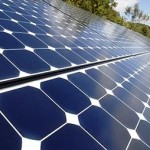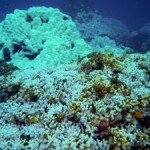
Global Emissions
In 2009, total global CO2 emissions had increased 25% since 2000 to 31.3 billion tonnes and almost 40% since 1990, the base year of the Kyoto Protocol. In 1990, global emissions were 22.5 billion tonnes, an increase of 45% on the 1970 level of 15.5 billion tonnes.
The very large regional variation in emission trends in 2009 resulted in a 53% share of developing countries versus 44% for industrialized countries with mitigation target for total greenhouse gas emissions under the Kyoto protocol. The remaining 3% is accounted for international air and sea transport. The top-6 emitting countries, including the EU-15, comprise two-thirds of total global emissions whereas the top-25 emitting countries capture more than 80% of total emissions.
Emissions Per Capita
While emissions in China and other developing countries have increased rapidly in recent years, also in absolute figures, the picture is different for CO2 emissions per capita or per unit of GDP. Since 1990, CO2 emissions per capita have increased in China from 2.2 to 6.1 tonne per capita and decreased in the EU-15 from 9.1 to 7.9 tonne per capita and from 19.5 to 17.2 tonne per capita in the USA.
These changes reflect a number of factors including the large economic development in China, structural changes in national and global economies, and the impact of climate and energy policies. Due to rapid economic development, per capita emissions in China are quickly approaching levels common in the industrialized countries of the Annex I group under the Kyoto Protocol. In fact, present CO2 emissions per person in China are now similar to France.
Trends in Renewable Energy Sources
The trends in CO2 emissions include the impact of policies to improve energy efficiency and to increase the share of renewable energy sources over that of fossil fuels. Wind power capacity in the world grew 31% in 2009 (GWEC, 2010), with one-third of new installations in China. For the fifth year in a row, China has doubled its installed wind power capacity. Total solar photovoltaic power installed in 2009 is 46% up on 2008, with 70% installed in Europe which is about 50% more than in 2008 (EPIA, 2010). The USA also installed 50% more in 2009 and China doubled its installed capacity. China now leads the world in large-scale hydropower with 19% of global production, and is well before Brazil and the USA with a 12% share each. The annual increase in biofuel use in road transport of 15% in 2009 was lower than in previous years which saw about 30% increase.
Consequences for the Kyoto Protocol Targets and Emission Trading
Collectively, the Annex I countries to the Kyoto Protocol reduced CO2 emissions in 2009 by about 7%. Assuming that the non-CO2 greenhouse gas emissions show a similar trend, the total 2009 emissions of the Annex I countries are about 10% lower than in 1990, the base year for the protocol.
The decreases in 2008 and 2009 will help industrialized nations to meet their target under the Kyoto Protocol. Except for the United States, these countries are due to cut emissions collectively by an average of at least 5.2% below 1990 levels by 2008-2012. However, since a large part of the decreases is due to a freeze or drop in economic activity in response to the credit crisis, greenhouse gas emissions could rapidly increase toward pre-recession levels as industrialized countries grow out of recession.
Click here to read complete report by Netherlands Environmental Assessment Agency (PBL): No Growth in Total Global CO2 Emissions in 2009.
About Netherlands Environmental Assessment Agency (PBL)
The Netherlands Environmental Assessment Agency (PBL) is the national institute for strategic policy analysis in the field of environment, nature and spatial planning. We contribute to improving the quality of political and administrative decision-making by conducting outlook studies, analyses and evaluations in which an integrated approach is considered paramount. Policy relevance is the prime concern in all our studies. We conduct solicited and unsolicited research that is always both independent and scientifically sound. Visit www.pbl.nl for more information.
Source: Netherlands Environmental Assessment Agency (PBL)














